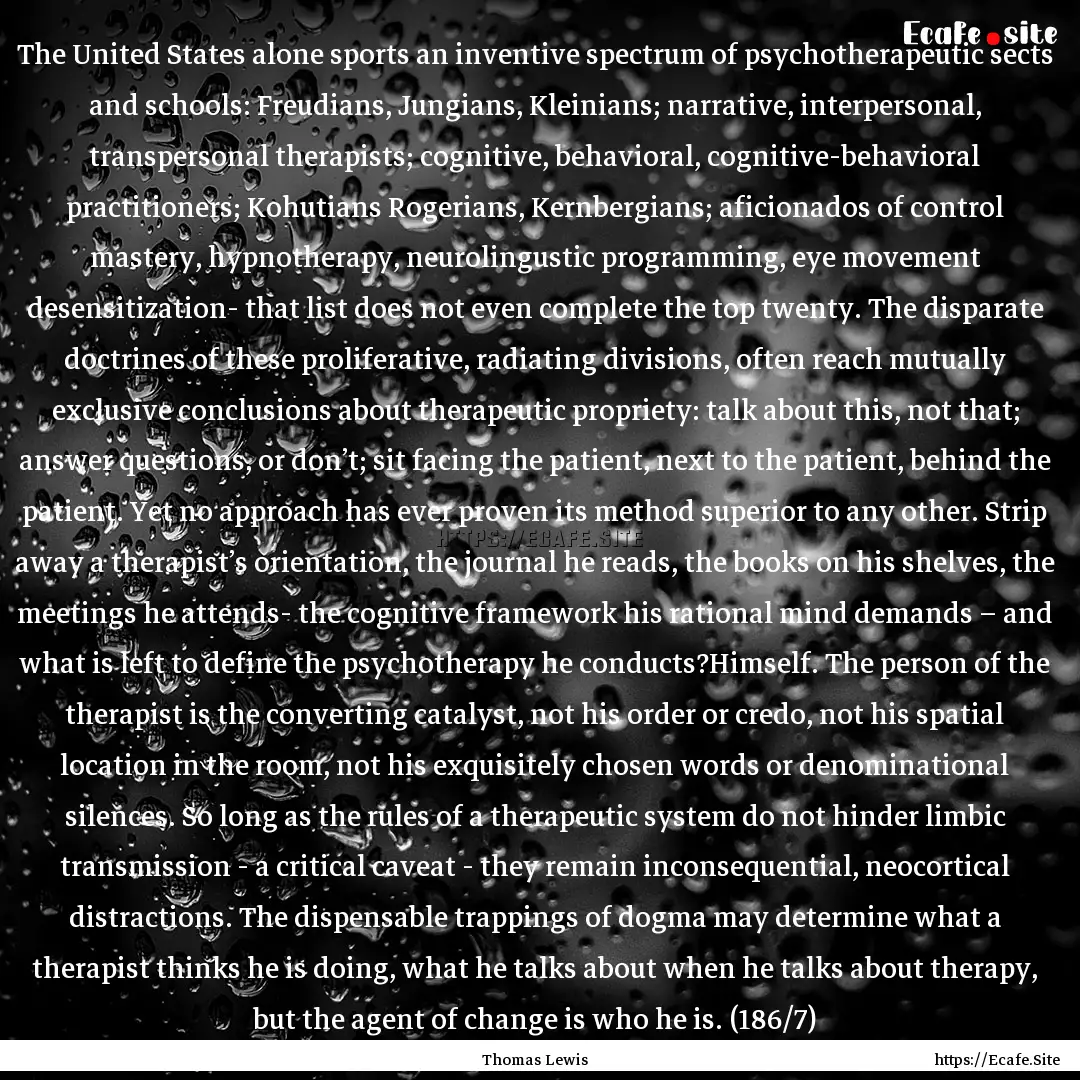
Report, if you have a problem with this page“ The United States alone sports an inventive spectrum of psychotherapeutic sects and schools: Freudians, Jungians, Kleinians; narrative, interpersonal, transpersonal therapists; cognitive, behavioral, cognitive-behavioral practitioners; Kohutians Rogerians, Kernbergians; aficionados of control mastery, hypnotherapy, neurolingustic programming, eye movement desensitization- that list does not even complete the top twenty. The disparate doctrines of these proliferative, radiating divisions, often reach mutually exclusive conclusions about therapeutic propriety: talk about this, not that; answer questions, or don’t; sit facing the patient, next to the patient, behind the patient. Yet no approach has ever proven its method superior to any other. Strip away a therapist’s orientation, the journal he reads, the books on his shelves, the meetings he attends- the cognitive framework his rational mind demands – and what is left to define the psychotherapy he conducts?Himself. The person of the therapist is the converting catalyst, not his order or credo, not his spatial location in the room, not his exquisitely chosen words or denominational silences. So long as the rules of a therapeutic system do not hinder limbic transmission - a critical caveat - they remain inconsequential, neocortical distractions. The dispensable trappings of dogma may determine what a therapist thinks he is doing, what he talks about when he talks about therapy, but the agent of change is who he is. (186/7) ”

Thomas Lewis
From : A General Theory of Love



